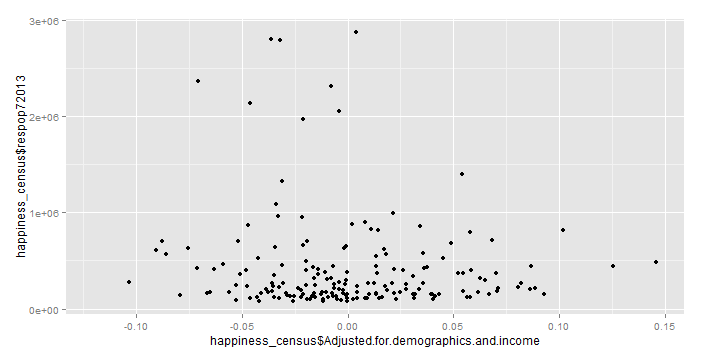In 2005, Lawrence Summers, president of Harvard, former US Secretary of the Treasury and Chief Economist of the World Bank, gave a speech at NBER where he discussed some employment data. He said he was offering a positive, observational view and not a judgemental or normative view.
…the data will, I am confident, reveal that Catholics are substantially underrepresented in investment banking […], that white men are very substantially underrepresented in the National Basketball Association, and that Jews are very substantially underrepresented in farming and in agriculture. These are all phenomena in which one observes underrepresentation and I think it’s important to try to think systematically and clinically about the reasons for underrepresentation.
He thought that these prefatory statements, and that he was attempting to be a little provocative and not speaking on behalf of Harvard, would have opened up a thoughtful discussion of various factors leading to under-representation of women in tenured positions in science at top universities. He could not have misjudged his audience more poorly. Shortly thereafter, he resigned as Harvard’s president ahead of a no-confidence vote by faculty.
A few years before the fateful speech, during his tenure as Harvard president, a website created by a Harvard student called Facemash almost got its creator, Mark Zuckerberg, expelled. Two years later, Twitter was founded. Looking back from 2023, we have seen many intellectuals and public figures stumble on these platforms, and their mistakes generally fall into the same category of error. It’s one anyone in a public speaking role must learn to avoid.
When connecting audio equipment, you have to be careful to avoid an impedance mismatch to avoid lifeless instruments, digital glitches, and fried amps. In public speaking, you have to be careful to avoid a stage mismatch to avoid lifeless audiences, digital mobs, and fried jobs. I’m not talking about the thing the podium is on; I’m talking about Robert Kegan’s stages of human development. According to this framework, people go through at least 3 and up to 5 stages of development over our lives.
Briefly:
Stage 1: A very young child can sorta control their motor skills, but their impulses and perceptions aren’t things they think about. A reflection of a baby in a mirror will be treated as real.
Stage 2: Impulses and perceptions can be thought about, but needs and desires feel objectively real. A child in this stage can understand why they’re hungry and do something about it, but won’t question their interest in playing a game.
Stage 3: In this stage, interests and desires can be examined, and, sadly, we lose our ability to play like children. We vibe with people and are emotionally engaged, but we might also panic or yell at someone in anger.
Stage 4: We understand how the influences of those around us shape our identity and yet sometimes do things that don’t align with that. We learn the rules of society and how to fit into systems. We can keep a cool head when others are panicking, but might suppress emotions or feel disconnected. A judge would use Stage 4 thinking to assign a criminal penalty according to the law, even when public outcry demands a harsh sentence.
Stage 5: We understand many different kinds of systems and can reason about how different systems would work in a given situation. We have many different identities and don’t feel like any particular one is the “true self”. Emotions are welcomed, even when they’re difficult, but what behavior results is not deterministic. A judge sparing a young mother from jail may be using stage 5 thinking.
Unless there are people having tantrums and playing carefree in the aisles, you can expect most people are primarily using a stage 3 mode of relating to the world and to your speech. Here’s the thing: While a comment made from a Stage 4 perspective can appear heartless when viewed from a Stage 3 perspective, a comment made from Stage 5 can look a partisan Stage 3 comment. Most viral outrage comes from this kind of stage mismatch. An ironic joke about AIDS not being just an African thing requires an ability to consider the different identities that make up a person, characteristic of stage 5. Heard from a stage 3 perspective, it’s enraging. If you are an intellectual, you probably spend more time than most around people relating to the world using strategies from stages 4 and 5, and you will get used to saying complex things that are nevertheless understood. This is where people mess up. They think they’re in a cozy little salon, but they’re in the town square.
Twitter and Facebook have been called our “global town square”. Those who coined the phrase no doubt meant to vaguely gesture at a bucolic vision and egalitarian ideal of free speech, but I think the metaphor is more apt than that.

You are not here.

You are here.
As in Times Square, you are surrounded by many people, not all of whom you can see, not all of whom have your best interests in mind, and not all of whom can avoid lashing out if something you say triggers jealousy or rage. In the global Times Square, you don’t just produce content, you are content, and since the invention of social media, you are always in the global Times Square.





